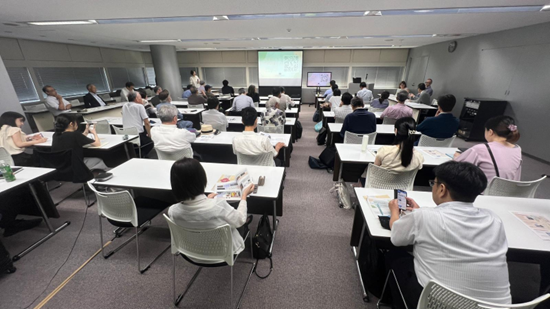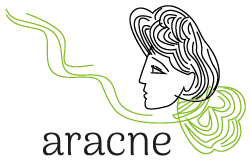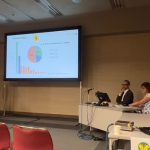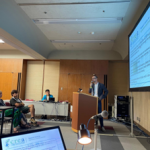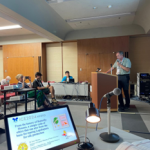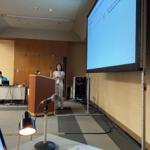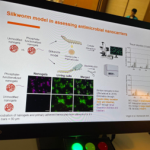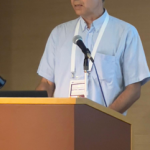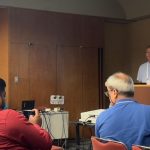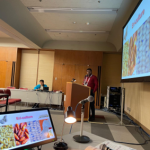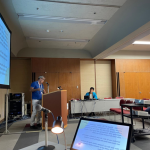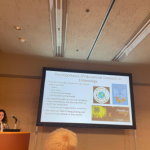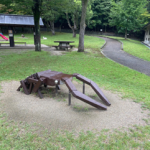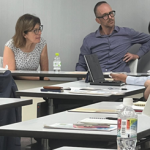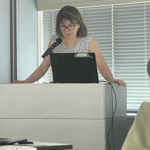The XXVII International Congress of Entomology (ICE2024) was held in Kyoto, Japan, from 25 August to 30 August 2024. The theme of the congress was: New Discoveries through Consilience. The congress was notable for the high level of attendance by ARACNE partners, with the intervention of speakers from CREA, NKUA, and the Esapolis Museum.

In particular, CREA was responsible for organising one of the symposia of the Apiculture and Sericulture Section, which was designated as 2-4 and entitled: ‘Raw silk production beyond textile: silkworm general rearing conditions and environmental impact of sericulture’. The session was chaired by: Alessio Saviane and Silvia Cappellozza.
The programme included the following oral presentations:
- Insect welfare from a consumer perspective: the case of Bombyx mori in the silk supply chain by Alessio Saviane (CREA, Italy)
- From the history of Butterfly Houses, a simple code of ethics that can also form the basis for rearing Lepidoptera for silk production by Enzo Moretto (ESAPOLIS Museum, Italy)
- Sericultural Industry beyond ‘silk’ by Shuichiro Tomita (NARO, Japan)
- Silkworm, an invertebrate model to accelerate early antimicrobial drug discovery and development by Yidong Yu1, Kazuhisa Sekimizu2 (1JSPS International Research Fellow, Japan and Teikyo University, 2School of Pharma-Science, Japan)
- A lesson learnt from bees. Can the BeeNet environmental biomonitoring project be replicated for the silkworm? by Piotr Medrzycki (CREA, Italy)
- The role of design in silkworm domestication by Filippo Da Prada, Gaia Brambilla, Veronica Camera (StudioManifesto, Italy)
- Elevating Eri culture in India via chawki rearing for industrial production by Mahesh D S, Surajit Hazarika, Dibya Jyoti Hazarika, Kallare P Arun Kumar, K M Vijayakumari (Central Muga Eri Research and Training Institute, Central Silk Board, India)
- Silk beyond the textiles: The added value of sericulture in educating students on the value of their traditions, cultural heritage and the construction of a European identity by Skarlatos G. Dedos1, Diana Mantegazza2, Danae Kaplanidi4, Sonja Sterman5, Andreja Urbanek Krajnc3, Silvia Cappellozza2 (1National and Kapodistrian University of Athens, Greece, 2 CREA, Italy, 3Faculty of Agriculture and Life Sciences, University of Maribor, Slovenia, 4Piraeus Bank Group Cultural Foundation, Athens, Greece, 5Faculty of Mechanical Engineering, University of Maribor, Slovenia).
Silvia Cappellozza was also speaker in Symposium 8. Genetics and Genomics, chaired by Jung LEE (Gakushuin University), Tsuguru Fujii (Kyushu University): ‘The genetic resources of domesticated silkmoth and wildsilkmoth in the post-genomics era’, with the following oral presentation: ‘Silkworm and environment: sensitivity to juvenile hormone analogues in the framework of the ARACNE project’. She focused on the environmental problems created for the silkworm by a particular class of insecticides, the Insect Growth Regulators, by reporting the phenomenon of the ‘non-spinning syndrome’ experienced at the beginning of the ARACNE project (spring 2023), probably due to the drift of a pesticide from vineyards.
The project partners focused their presentations on subjects pertinent to the ARACNE initiative and its activities. In particular, Dr. Saviane emphasised the issue of consumer perception of animal welfare in silk production, Dr. Moretto the necessity of a code of ethics for Lepidoptera rearing, and Prof. Skarlatos discussed the added value of silkworm rearing in educating children to appreciate their traditions, cultural heritage, and the construction of a European identity.
In addition to their active involvement in the congress organisation and its facilitation, the partners also received valuable insights from other symposia, such as the one on ‘Manga, Comics, and Games as tools for Entomological Engagement’. These suggestions and advice will prove instrumental in the implementation of the Aracne content, particularly in the context of education and communication, and will be of particular benefit to the student audience.
Silvia Cappellozza and Alessio Saviane also attended the dinner of the ‘Japanese Society for Wild Silkmoths’, organized as part of ICE always with the aim of sharing knowledge and creating exchange and collaboration with scientists working in the field of sericulture in Japan and around the world.
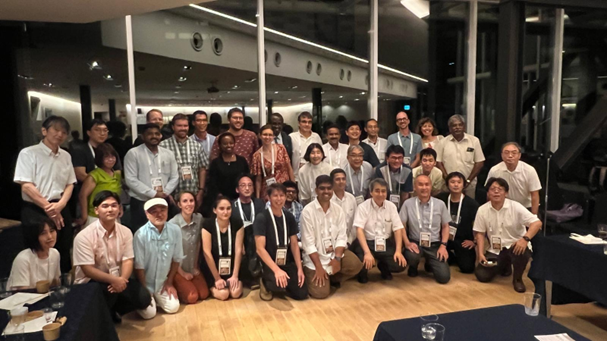
It is of significant interest to note the Japanese public’s apparent lack of disgust towards insects. This is likely due to an early education that instils a respect for nature, as evidenced by the presence of toys in parks that resemble insects. Furthermore, it was encouraging to observe in one of Kyoto’s gardens dedicated to children a statue of Pinocchio holding the ever-present Talking Cricket. This was a gift from the Lyons Club of Florence, a twin city with Kyoto, which has a copy of the same statue in the Horticulture Garden, created by the sculptor Pietro Porcinai. The Talking Cricket thus serves not only as the symbol of wisdom devised by Collodi, but also as a tribute to Japan’s respect for all kinds of insects.
For the CREA delegation, the visit to Japan represented an additional opportunity to consolidate relations with the Dainippon Silk Foundation, which had invited Silvia Cappellozza to present the ARACNE project at its Tokyo office. The presentation, which was translated from Italian into Japanese, generated considerable interest among the audience in the hall and those who connected online. It also stimulated discussion on how to preserve the cultural heritage related to silk in Italy and Japan and how to revitalise sericulture in both countries, potentially through joint initiatives, sharing experiences and best practices.
